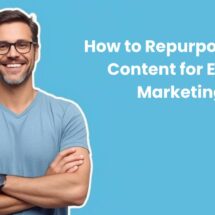How to Write Copy That Sells
By Sean Tinney February 22, 2022
Writing good sales copy can be a daunting task, even for experienced writers. But the key to writing copy that sells isn’t a mystery. There are some basic principles that anyone can follow to write engaging copy that converts an audience into customers.
What is sales copy?
Sales copy is any written text with the purpose of selling a product or service. This is a basic definition, but it’s important to have a solid understanding of what sales copy is and isn’t.
Here are a few things that sales copy is not:
- a product page with every feature and detail
- a commercial full of clickbait language
- a how-to guide for the product
Sales copy aims to hook the reader and encourage them to learn more, with the ultimate goal of purchasing the product or service.
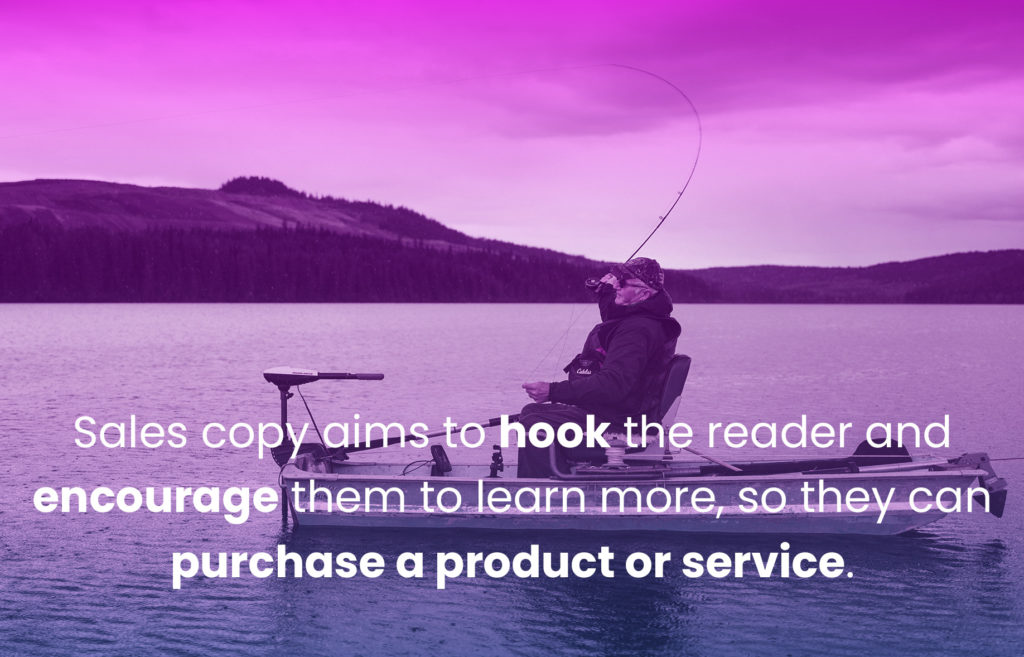
How do you pull your reader in and convince them to give you their hard-earned money?
Follow these six principles to turn your copy into content that sells.
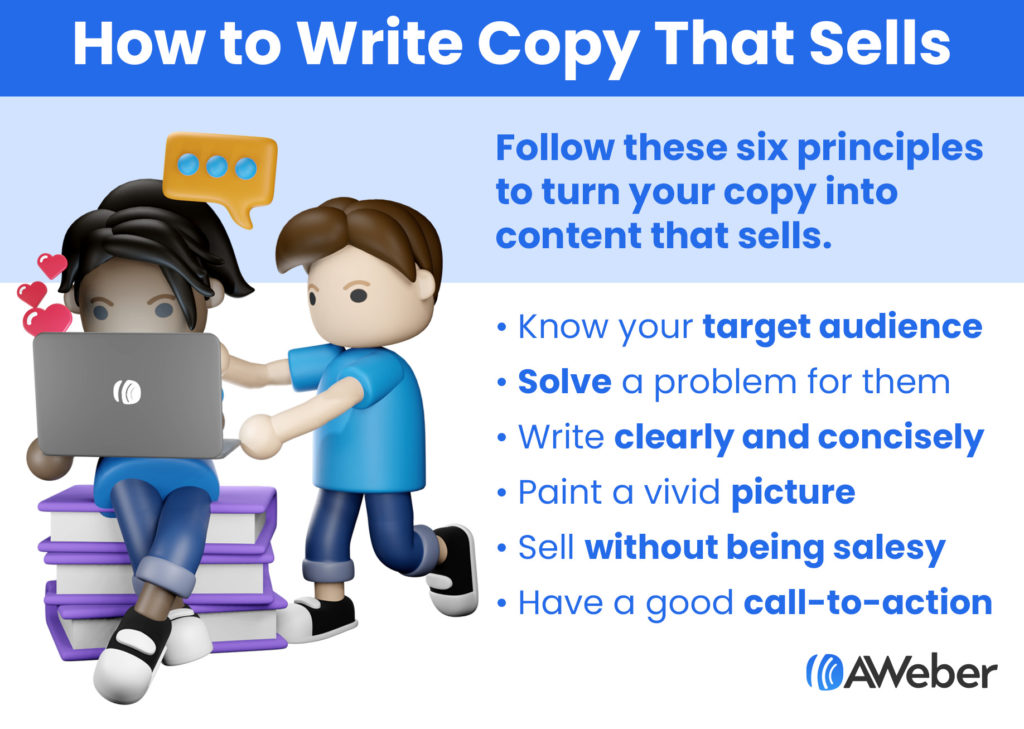
Know your target audience
Knowing your target audience might seem obvious. But many companies struggle with targeting a specific audience. The more specific your audience profile, the easier your copy will be to write well.
Don’t fall into the trap of saying your target audience is everyone. Sure your product might be able to benefit everyone, but it’s almost impossible to write sales copy that speaks to everyone.
Let’s imagine you are selling paper towels. Are paper towels beneficial to just about every person you know? Yes, of course.
How do you write copy about paper towels that will convince every single person to buy your brand? You can’t. It’s impossible.
Now let’s whittle our target audience down to someone more specific. Can you think of someone who cleans up many messes, makes shopping decisions, and always looks for ways to save time?
In general, mothers check these boxes. This doesn’t mean college students and grandparents can’t use your product. But, if we write our sales copy for moms of young kids, we can create engaging, targeted copy that converts.
Solve a problem
Your product or service likely solves a problem or two. Your sales copy should clearly outline how your product is a solution for your target market.
Once you’ve got your target audience in mind, you can imagine the specific problems they need solving. How does your product or service solve this for your target audience?
Focus on one problem and solution in your sales copy to avoid long-winded writing. The more succinct your copy, the better. People don’t have time to read about every problem and solution. If they want to know more, they can read further information on a product page, FAQ, or reviews.
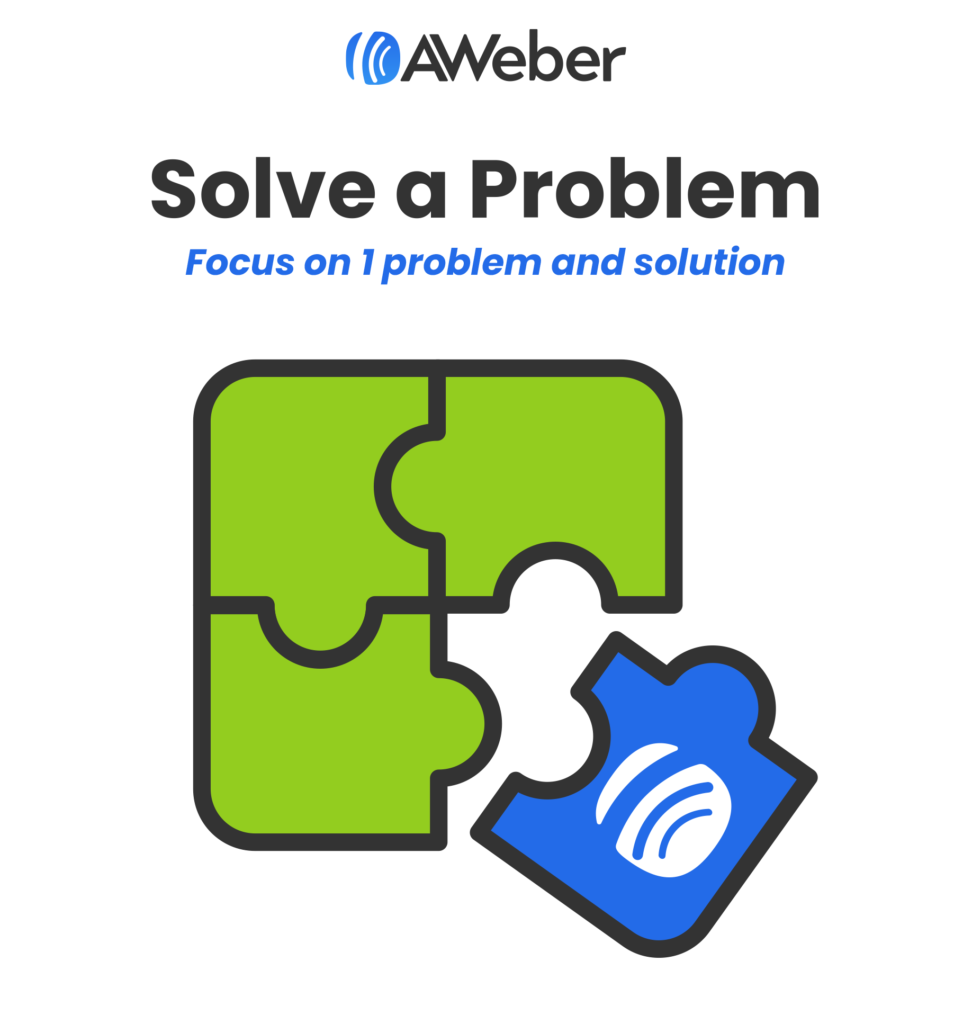
Let’s return to our paper towels example. Moms clean up messes all day, and they want to save time. Your paper towels are extra absorbent, so messes clean up quickly with little residue, while using fewer towels.
The paper towels might also be affordable and environmentally friendly, but the meat of your copy should only focus on one main problem.
Paint a picture
You don’t need to be the next Charles Dickens to paint a picture with your words. However, using engaging, vivid language and storytelling will take your boring copy to the next level.
Use strong verbs and adjectives when describing your product or service instead of dry facts. Leave that information for the “learn more” part of your ad.
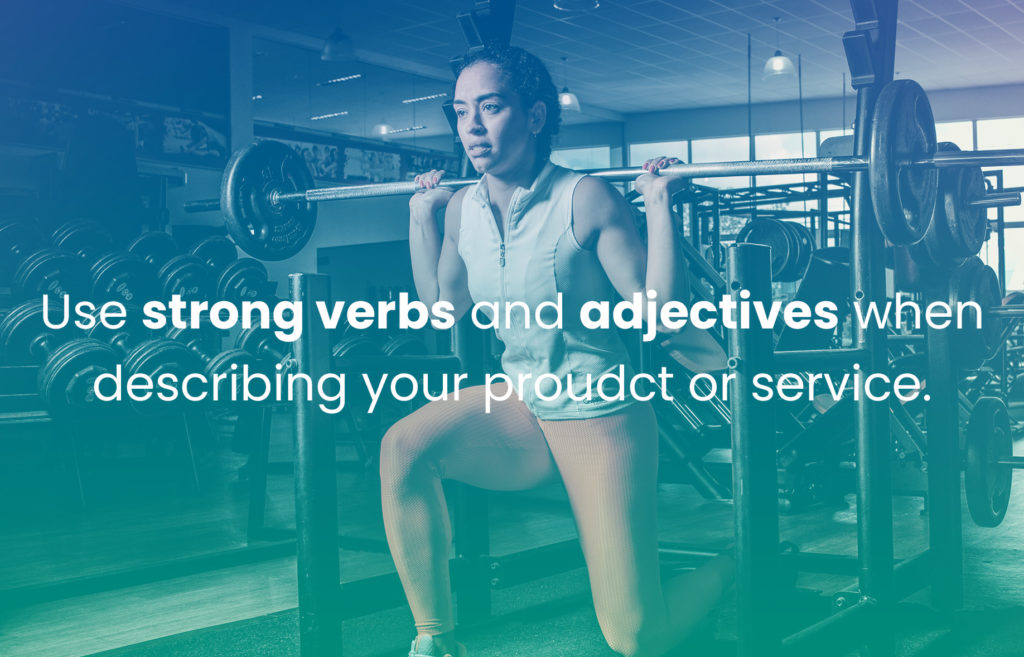
Writing about the layers in paper towels and how they’re woven together isn’t going to convince most people yours are the best. Leave out the cutting edge technology that keeps your paper towels from falling apart. Words like absorbent, durable, effortless, speedy, and heavy-duty create an image in your audience’s mind—and it’s an image they want.
Storytelling is another great way to raise the quality of your sales copy. Stories make your product or service personal. It allows your audience to imagine your product in their lives.
This doesn’t mean to write a novel about your product. A sentence or two is enough to tell a story that is relatable to your audience.
Here’s an example:
Moms, when you’re cleaning up your third mess before 9 a.m., don’t spend a minute more wiping up spills.
It’s one sentence, but it’s a story that your target audience can see themselves in. You’ve appealed to their emotional side, and now they’re invested because your sales copy “gets” them.
Write clearly and concisely
One of the hardest parts of copywriting is packing everything you need to say in as few words as possible. Each word is valuable real estate.
We’ve already discussed the importance of picking one target audience and one problem to solve for the sake of conciseness. It’s also important to eliminate the fluff. Unnecessary words and phrases make your message weaker.
Pick the clearest words and the shortest way to say what you need to say whenever possible. Avoid jargon, and make your word choice accessible to people of varying backgrounds. Good spelling and grammar are also crucial to clear writing.
A free grammar checker and editing program like ProWritingAid can help by giving you feedback on your writing. Here are some things you should watch out for when writing sales copy:
- High readability scores
- Wordy sentences
- Inaccessible word choice
- Passive voice
- Awkward sentence construction
Sell without being salesy
Good sales copy will sell a product or service without using gimmicky language. People are turned off by language that is overtly salesy. Instead, we want customers to feel as if the product sold itself.
This is a strategy that can take some practice. Start by reading your sales copy out loud. Does it sound like it’s being read in the voice of a 1990s car dealership commercial announcer? Does it evoke memories of watching QVC at Grandma’s house?
Here are some words that sound salesy and will quickly turn your audience off:
- Guarantee
- Once-in-a-lifetime
- Cheap
- Limited
Avoid generic adjectives that don’t tell customers anything about your product. These include words such as innovative, amazing, incredible, or exceptional.
Instead use descriptors that evoke a clear image. Any sort of superlative, like best, most, always, etc., also sounds gimmicky.
Let’s return to our paper towels example. If your copy says that your paper towels are “the most amazing paper towels on the market, guaranteed,” we still don’t know anything about them. Why should we trust that they’re the best if you’ve given us no reason to back up your claim?
Instead you might say that the paper towels “absorb more messes with fewer towels for a quick, sparkling clean.”
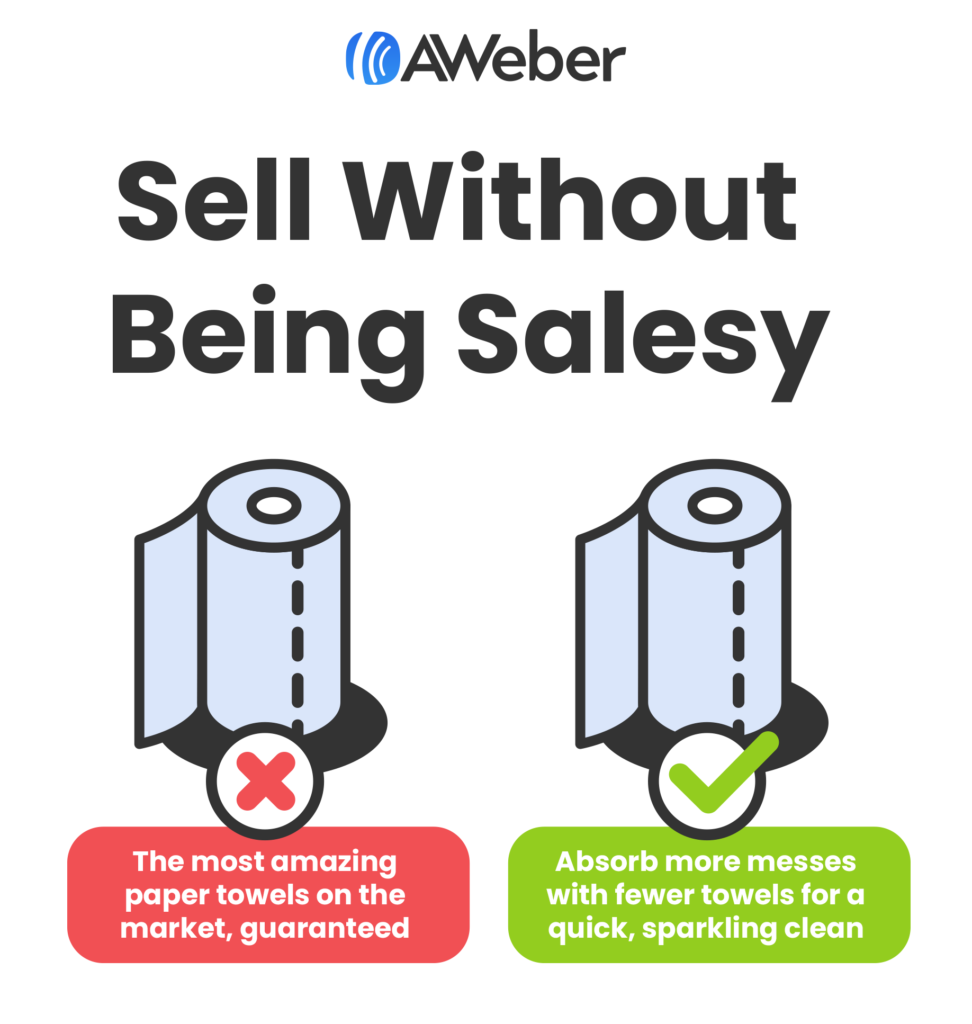
Craft a killer call-to-action
Ultimately, we want our sales copy to sell a product or service. We can’t do this without a clear, effective call-to-action.
A call-to-action doesn’t have to be a “buy now” button. You can invite customers to learn more about a product, schedule a consultation, subscribe for a coupon or discount, or watch a video to see the product in action.
Don’t overload your sales copy with multiple CTAs—pick one. A good CTA should be one short sentence.
The customer should know exactly what they’re getting when they follow your CTA.
If your CTA says “click to learn more,” don’t redirect them to a contact form. If your CTA is to schedule a consultation, don’t make them click through two more pages of information to get to the contact form.
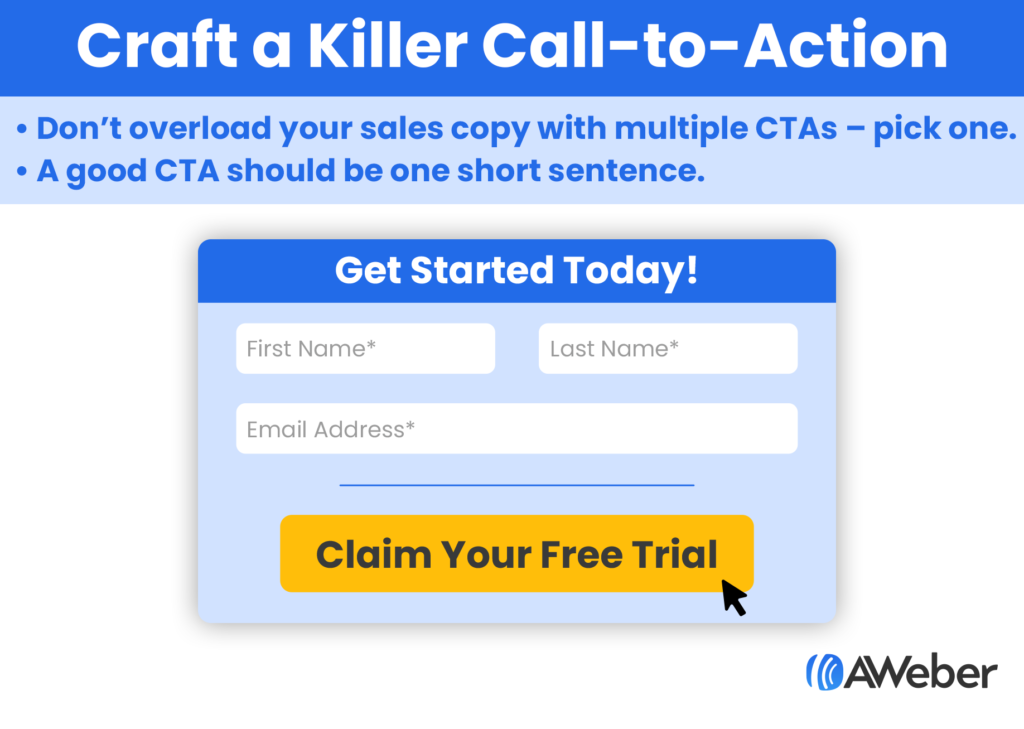
Putting it all together
Good copywriting is a recipe. Once you have all six of the ingredients down, you can create excellent sales copy that converts your audience into customers.
Whether you’re selling a coaching service, a software, or even a brand of paper towels, the principles of great copywriting are the same. Start with your focused target audience and craft copy that speaks to them.
 87% off ends soon!
87% off ends soon! 
